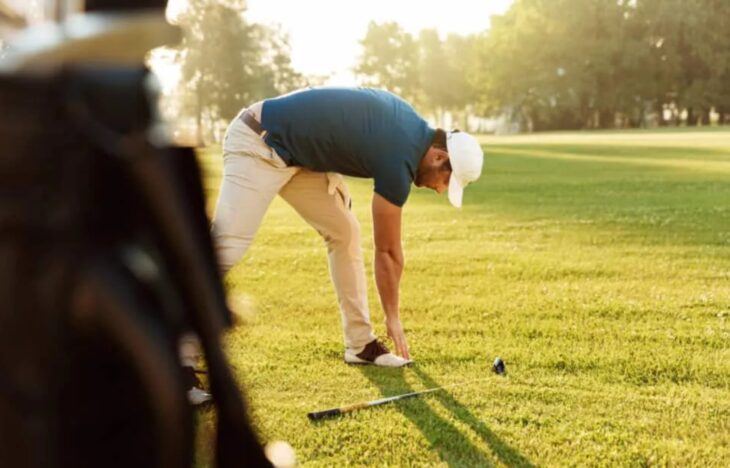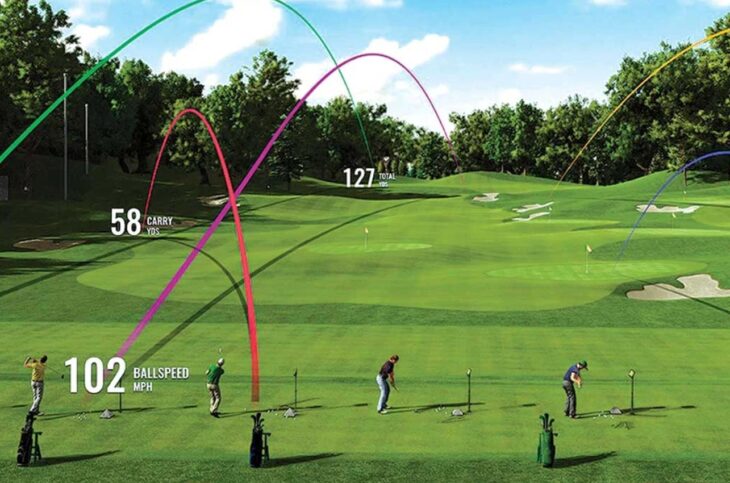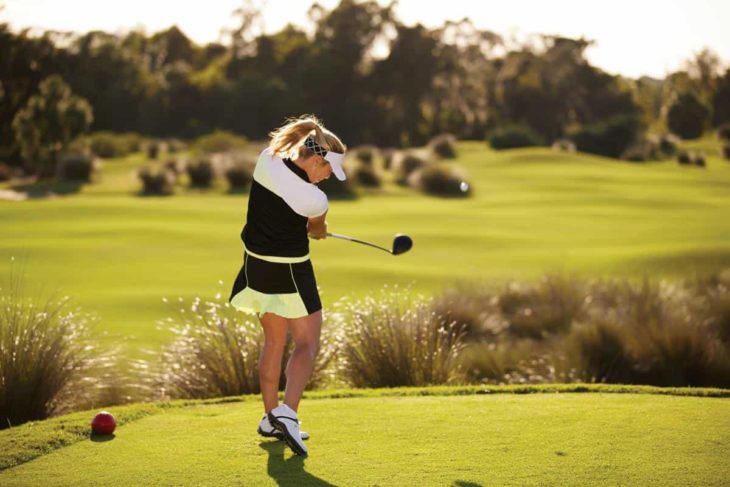The driving range isn’t the only cure to preventing high scores. There are other ways to score better and not have to spend hours in the hot sun beating ball after ball. While the pros do spend a significant amount of time on the range, they also employ these 5 things as well to gain every little advantage they can possibly get.
Contents
1) Improve Your Fitness

Source: Golfing Focus
I know nobody wants to hear this but there is a reason why PGA Pros all have personal trainers now. It’s because your physical well-being has a huge impact on your swing and consistency.
We have all had that day where we just feel “off”. Your swing feels stiff and your short game is reminiscent of the first time you ever played. These bad days can be attributed to a lack of fitness routines as you have exhausted all your energy at work or at home with the kids.
Just keeping up and maintaining your current handicap is one benefit if you don’t play regularly. But if you put some effort into improving your strength and flexibility then you can turn that into an advantage.
Once you implement a stretching routine it will only take a few weeks to start feeling a difference. All of a sudden it will take less time for you to warm up. Your swing will feel like your car does after getting a fresh oil change. And you will be able to play longer so when you do go to the range, you can put some solid time in.
2) Strategy & Course Management

Source: Twitter
I find this to be the most enjoyable part of golf yet a lot of people don’t consider it at all let alone to the extent that the pros do. And while I don’t advocate carrying around a yardage book that has so many notes it looks like an encyclopedia, a little forethought can go a long way.
No matter what your handicap is, you have a strength in your game that you are just more comfortable with than other aspects. Whether that be putting, driving, wedges, or hybrids, your first step is to embrace this strength.
Once you have this strength now the fun part is figuring out how to beat the golf course with it.
If your favorite club is a 7 iron and you are automatic with it from 150 yards then you want to play from the 150-yard marker as much as possible throughout the round. Assuming there are four par 3’s, you have 14 holes to position your ball to your ideal yardage. With 14 attempts at hitting a green with your favorite club, even a 50% success rate would result in 7 pars (hopefully).
You may have to change clubs off the tee and hit 3 wood instead of the driver. You may also have to humble yourself and use a wedge to lay up to the 150-yard marker. Fight the urge to try and force a long iron to the green on a par 5 and stick to your pre-determined game plan.
3) Putt Anywhere And Everywhere

You don’t need the driving range to putt. In fact, most people don’t practice putting there anyway since the allure of smacking drives is usually too strong to overcome. If you don’t practice your putting at the practice facility then you have to get your reps in elsewhere.
The putter is the most used club in the bag. It accounts for anywhere from 30% to 50% of all the strokes you take in a single round. Yet in every amateurs bag, it’s usually the club they spend the least amount of money on and practice with the least.
Any putting practice you put in will lower your score, end of story. But to really help your putting try utilizing different surfaces. On carpet is the natural first choice and that’s great but there are different types of carpet to try out and adapt to. Your office carpet might run a bit faster than your living room so challenging yourself will get you used to different greens in the real world.
Always use a target that is smaller than a regulation cup. I recommend something that is just barely bigger than the ball. This will get you dialed in so when you get to the course it will look like your putting into a basketball hoop.
4) Read About Golf

Source: Remington Golf Club
There are boatloads of books available on golf and choosing only one is an impossible task. Your choice doesn’t have to be a boring instructional book though. By reading about golf in general you raise your golf IQ and just give yourself more knowledge which will result in more confidence.
-
Instructional or Mechanics
These are very much like the school textbooks that we all hated in school. Filled with boring language and no personality, they do not offer much insight since everyone swings so differently. Do you think Jim Furyk and Bubba Watson learned how to shoot in the ’60s by reading one of these? If you are a beginner and have the attention span to get through it then they will give you the basics of swing foundation.
-
Mental Game
Over the last couple of decades talk about the mental side of the game has skyrocketed. With Tiger Woods leading the charge on how powerful a strong mental game can be people are finally starting to accept this as a part of their game that needs work. One of the most successful authors in this field is Dr. Bob Rotella. Books such as “Golf Is Not A Game Of Perfect” and “Your 15th Club: The Inner Secret To Great Golf” are some of his highest-selling but there are a dozen or so specifically targeted at improving your mental golf game.
-
Biographies
Definitely the most exciting to read are biographies of golfers. Start with some of the older players such as Bobby Jones or Ben Hogan to get a glimpse of what golf was in its earlier days. Move your way through the decades to learn about some of golf’s more eccentric personalities such as Moe Norman and John Daly. Just reading about how other people have figured out how to shoot their best scores will get you thinking more creatively. Learning about some of their pitfalls will help you avoid the same fate as well.
5) Go Play!

Source: TSA News Blog
Sometimes skipping the range altogether is the answer. At the end of the day, we practice to shoot lower scores on the course so practicing on the course seems like the logical thing to do. If it’s not busy hit a couple of balls and practice shots you wouldn’t normally.
Luck favors the prepared and nowhere demonstrates that more than golf. You can check out MyGolfHeaven for more tips and guides.
